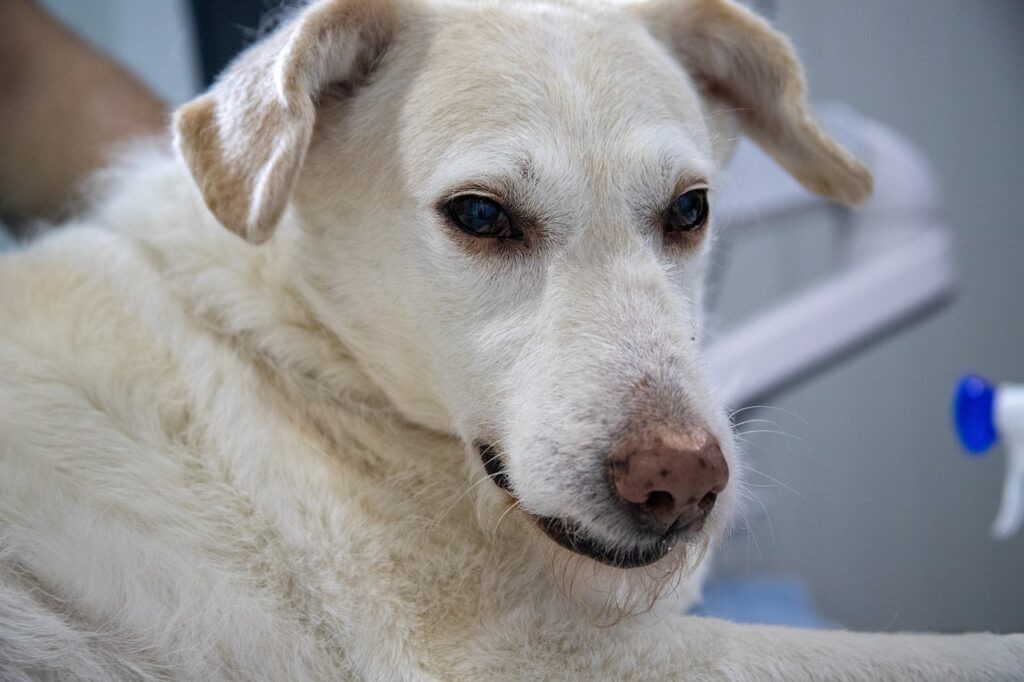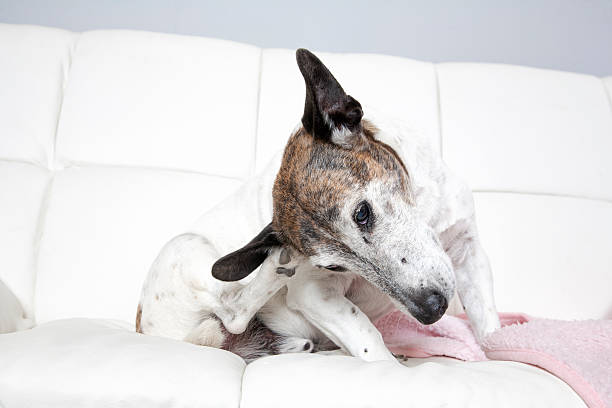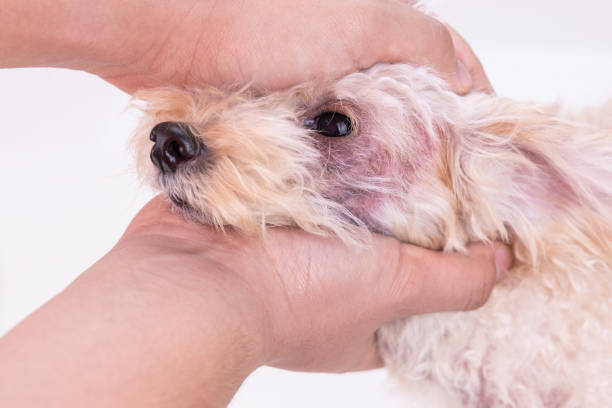Dogs often show frequent scratching behavior due to discomfort or itch. It is crucial to handle scab formations for maintaining a dog’s skin health. Firm scabs are formed when a specific part of the skin has inflammation and itchiness from various causes. These factors could be allergic reactions, wounds, fungal infections, and bacterial dermatological outbreaks. If these problems are not dealt with and if scabs are allowed to develop, dogs can suffer from severe itchiness and discomfort.
Causes of Crusty Scabs on Dog’s Skin
The crusty scabs on your dog’s back can only be an eyesore for you but are quite irritating for your dog, especially if it worsens. Scabs on the Dog’s skin don’t just appear out of nowhere for treatment and prevention; you need to know the root of the problem first. Here are some causes of scabs on your Dog’s back:
Allergies
Allergies are caused by the body’s immune system overreacting to environmental pollution, such as pollen, dust, or mould. This can lead to several symptoms, including sneezing, itchy skin, and crusty scabs. When your dog suffers from food allergies, its immune system becomes hypersensitive to environmental allergens. Your dog may be suffering from allergic dermatitis (AD).
Fleas
Fleas are small, brownish-black bugs that infest the fur of dogs and cats. They are parasites that feed on blood. Fleas can cause skin irritation and sores, which often lead to scabbing. Dogs can get fleas from contact with other animals that have them and from exposure to flea-infested environments, such as yards or parks. Flea bites can be itchy and uncomfortable for dogs, and if left untreated, they may lead to a skin infection.


Parasites
Most dog owners are familiar with the occasional scab on their pet’s skin. While often nothing more than a minor annoyance, it’s important to understand that these scabs may indicate a more serious underlying issue, such as parasites.
Parasites are organisms that live in or on another organism and draw nutrients from it, often causing harm. Dogs can become infected with parasites through contact with other animals, ingesting contaminated food or water, or being bitten by an infected insect.
Some of the most common parasites that infect dogs include roundworms, hookworms, tapeworms, and Giardia.
Symptoms of the parasitic infection can vary depending on the type of parasite involved but may include diarrhoea, vomiting, weight loss, hair loss, skin lesions, and scabs.
Skin Infections
Dog scabs are often a sign of infection. The most common type of infection that results in scabs on a dog is mange, a skin disease caused by tiny mites. Other infections that can cause scabs on dogs include fungal infections, yeast infections, bacterial infections, and parasitic infestations.
In many cases, the underlying cause of the infection can be determined by examining the scabs themselves. For example, if the scabs are black and crusty, they are likely due to a fungal infection; if they are moist and red, they are likely due to a bacterial infection.
Skin Conditions
Dog skin conditions are very common and can cause various problems, including scabs on a dog’s skin. Many skin conditions can cause scabs on dogs, including allergies, yeast infections, parasites, and dog immune system diseases. Some of the most common causes of dog scabs are allergies to food or environmental allergens, contact dermatitis, and pyoderma.
Cancer
Dogs who are diagnosed with cancer often develop scabs on their skin. The cause of these scabs is not completely understood, but the cancerous cells are believed to produce toxins that can irritate the skin.
The scabs may also be caused by a reaction to the chemotherapy drugs used to treat cancer. Dog Scabs Caused by Environmental Factors Many of the most common causes of dog scabs are environmental factors.
For example, environmental allergies and contact dermatitis can cause dogs to develop scabs on their skin.
Treatment
If your dog has scaly skin on his back, it is important to take him to the vet to determine the cause to treat crusty scabs on your Dog’s body.
In many cases, a dog’s back scabs are caused by a skin condition, such as seborrhea or pyoderma. If your Dog has scabs on his back, it is important to take him to the vet to determine the underlying cause and to receive treatment if necessary.
Treatment for dogs with scabs on their backs may include antibiotics, medicated shampoos, or steroids. In some cases, surgery may also be necessary.
How to Clean and Treat a Dog’s Scabbed Back
Dogs are prone to getting scabs on their backs, from playing too rough to getting into a scrap with another animal.
These crusty scabs will often heal independently, given enough time and rest. However, there are some cases where the scab needs to be cleaned and treated to speed up the healing process.
Trim
The Dog’s coat with scabs may already be suffering from hair loss. But if there are bits of retaining hair around the scabs, it is best to trim it out to keep the infected area clean and see the extent of the infection.
Wash with Warm Water
Rinsing your Dog’s skin irritation with warm water will soften the crusty scabs and the tissues surrounding the infected area. It also washes away irritants to prevent severe itching.


Moist Skin
You can use a wet cloth to moisten the scabs to prevent dry skin irritation on the infected area. You can also use ointment or coconut oil to keep the area moist.
Medication
Apply the prescribed medication to treat the Dog’s scabs according to the recommended dosage.
Prevention
There are a few things that you can do to help prevent your Dog from getting scabs on his back, including keeping him groomed and preventing him from licking his skin excessively.
Dogs are prone to getting scabs on their skin, especially if they are active and play outdoors. While it’s not always possible to prevent your Dog from getting scratched or bitten, there are a few things you can do to help minimize the chances:
Keep the Dog’s Immune System Healthy
First, ensure your Dog is always up-to-date on his vaccinations, including rabies. This will help protect him from any diseases he may encounter.
Keep the Dog’s Skin and Coat Clean
Secondly, keep his coat clean and well-groomed; this will help reduce the dirt and debris he picks up while playing outside.
Keep the Dog Safe from other Dogs
Finally, try to keep him away from areas with high concentrations of other animals – particularly sick or feral ones.
Understanding the causes and treatment of scabs on a dog’s back can help keep your pet healthy. A crusty scab lesion forms over a wound to protect it while it heals. Bacteria often cause them and can be itchy and uncomfortable for your Dog.
There are many potential reasons a dog might develop scabs on his back. If your Dog exhibits this symptom, it’s important to take him to the veterinarian for a diagnosis and treatment plan.
Until you know what’s causing the scabs, it’s best to refrain from topical treatments or home remedies, as these could worsen the problem.



